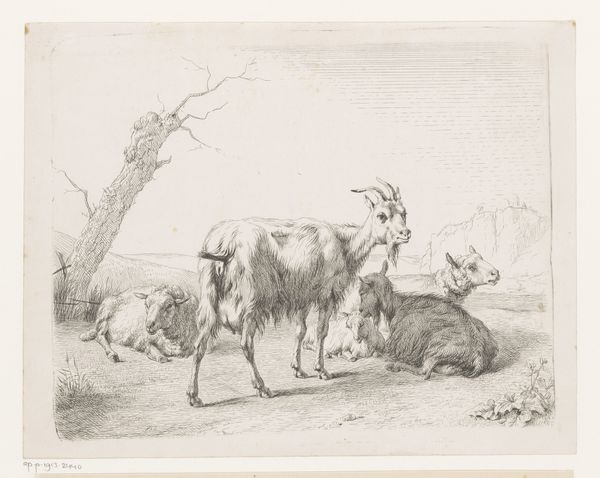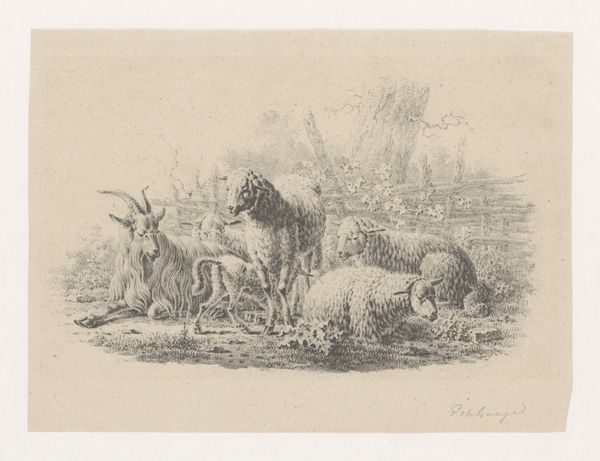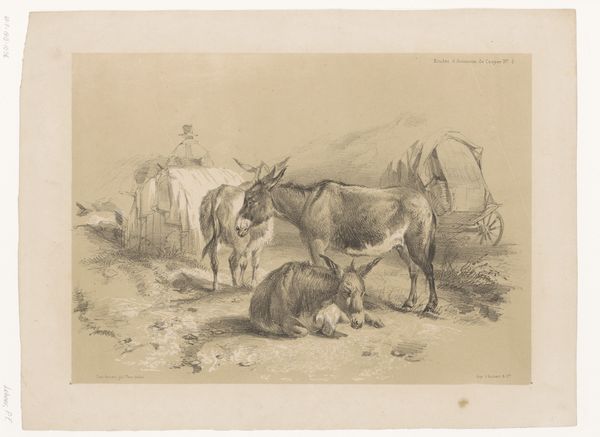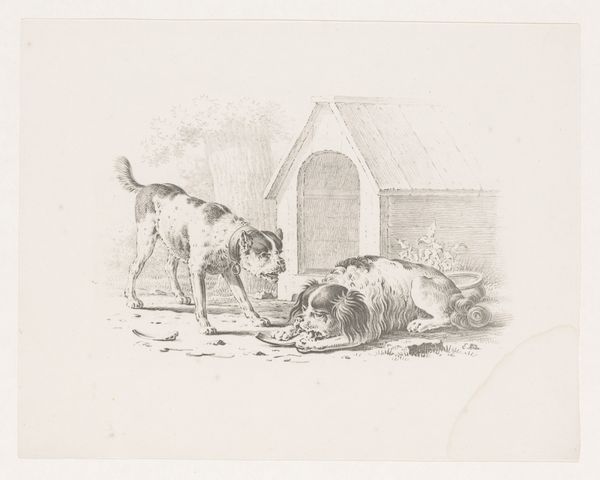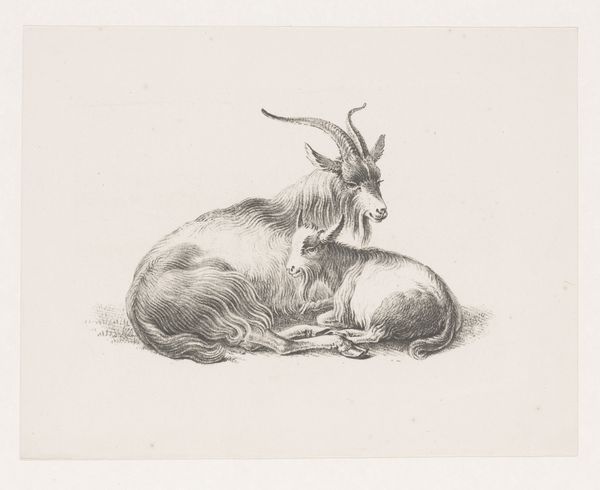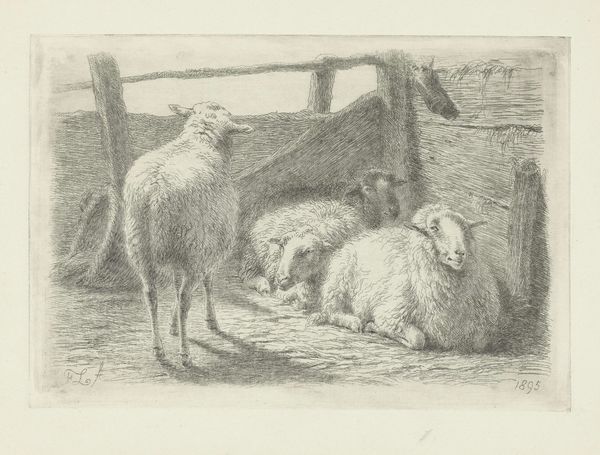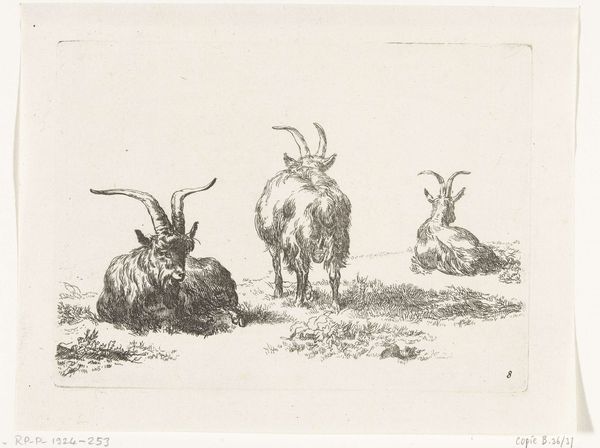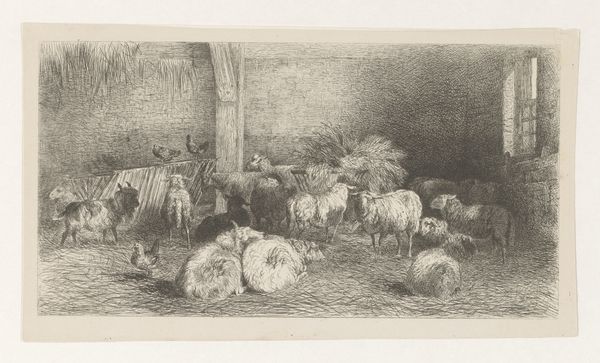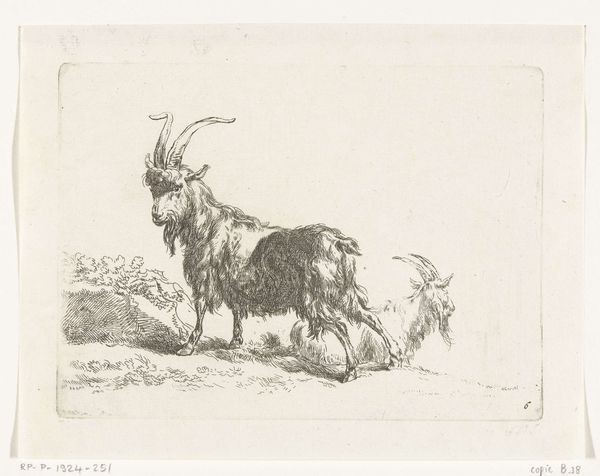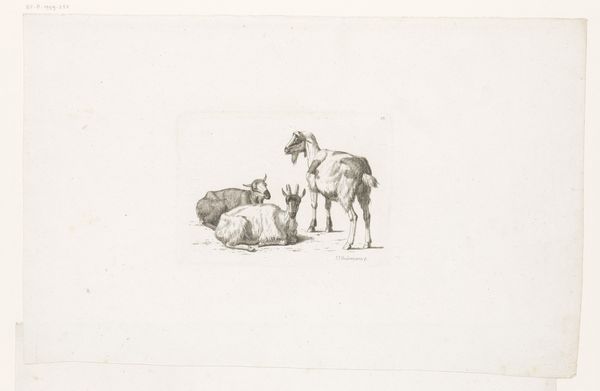
drawing, print, etching
#
drawing
# print
#
etching
#
pencil sketch
#
landscape
#
etching
#
line
#
genre-painting
#
realism
Dimensions: height 215 mm, width 273 mm
Copyright: Rijks Museum: Open Domain
Editor: Here we have Pieter de Goeje's "Two Goats in Front of a Shed," an etching from somewhere between 1809 and 1859. I’m struck by the contrast between the meticulously detailed goats and the almost rudimentary shed in the background. What can you tell me about it? Curator: Looking at this etching, I'm drawn to consider its production within the context of 19th-century printmaking. The etching technique itself – the labor involved in creating the plate, the acid's bite, the press – speaks to a specific moment in the industrialization of art. We should examine the quality of the paper and inks available at the time. To what extent did the materials available limit or shape the final product? Editor: That's interesting. I was thinking more about the subject matter. Curator: The subject is indeed relevant! But perhaps not in the way you immediately assume. What about the choice to depict goats and a simple shed? Consider the audience for whom these prints were made. Was there a burgeoning middle class with an interest in rural life? The existence of similar genre works indicates potential trends of the market for inexpensive, reproducible imagery that connected city-dwellers with a carefully constructed idea of the countryside. This representation could serve a very specific socio-economic function. Editor: So you’re saying the image itself is less important than how it was made and who bought it? Curator: Not entirely less important, but we need to consider the materials and the means of production as crucial components to understanding the image. After all, without those material processes, the image wouldn't exist. Editor: I guess I hadn’t thought about it that way. Seeing the etching as part of a larger industrial process changes my perspective. Thanks! Curator: Indeed. Examining art through a materialist lens opens up new avenues for interpretation, connecting artistic production to broader social and economic forces.
Comments
No comments
Be the first to comment and join the conversation on the ultimate creative platform.
